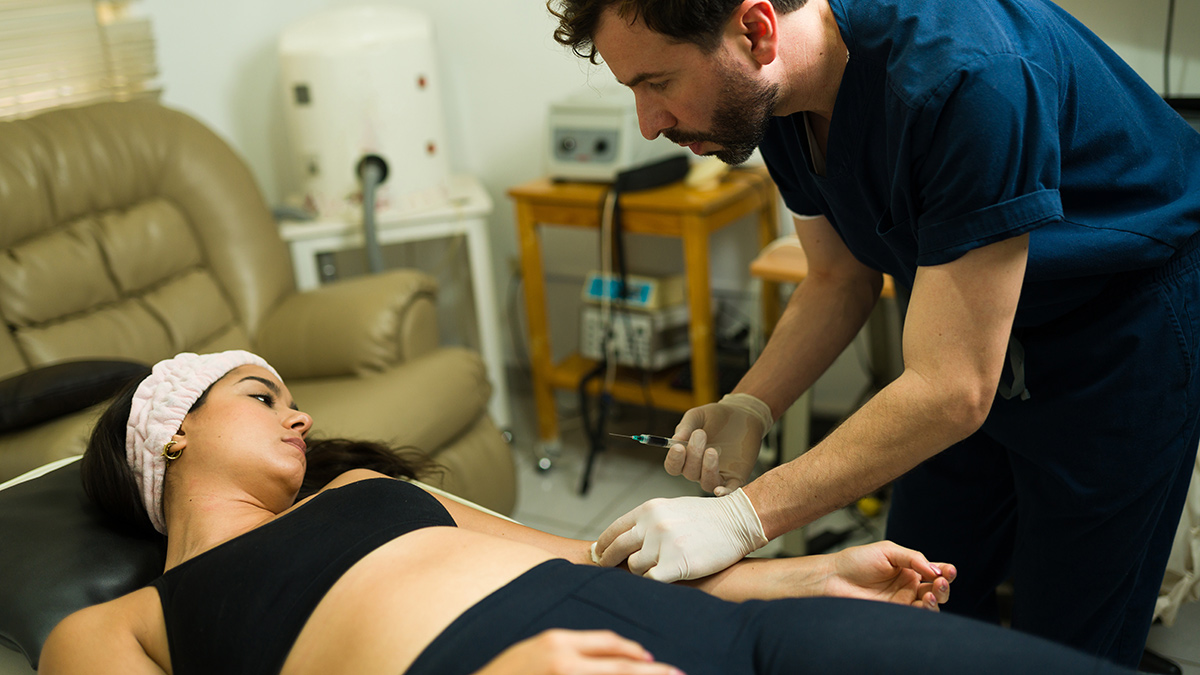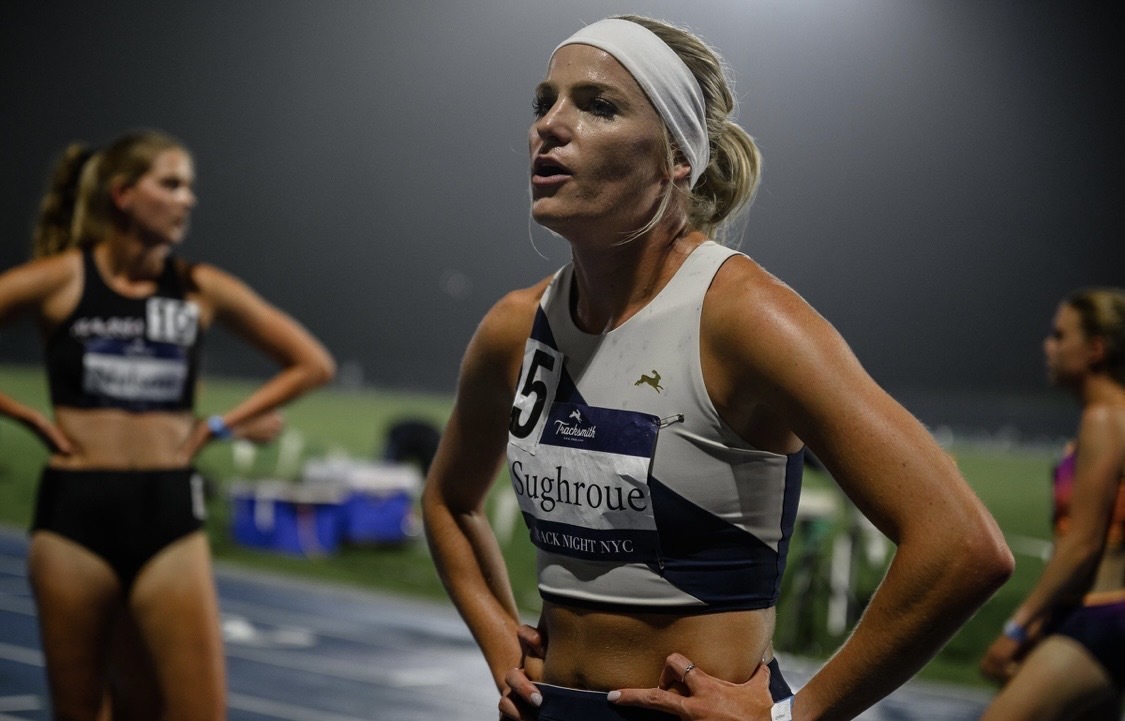人体一级高清图片搜索
Whether you’re a coach or an athlete, you’re constantly navigating the fine line between training too hard and staying healthy. Getting to the starting line without an injury is half the battle. But what happens when an injury threatens to derail a season or, even worse, an entire career?
Physiatrist Dr. Sonali Lal wants coaches and athletes to understand that there’s an entire spectrum of treatment approaches between conservative care and surgery.
“Most musculoskeletal injuries do not require surgery. There’s often a middle ground that athletes and coaches aren’t aware of.” — Dr. Sonali Lal
Dr. Lal works with a wide range of athletes, including runners, triathletes, and professional Broadway dancers. Her approach focuses on long-term healing, helping athletes navigate the full range of treatment options.
I sat down with Dr. Lal and discussed the four different types of regenerative medicine, what types of injuries make an athlete a good candidate, and what athletes and coaches can expect after treatment.
What Is Regenerative Medicine?
Regenerative medicine focuses on repairing and rebuilding damaged tissues by using the body’s cells, often taken from another part of the body (like your blood or adipose tissue). It iencourages your body to rebuild stronger, healthier tissue.
Regenerative medicine can deliver longer-lasting results and help speed up the body’s natural healing process, but it’s important to understand all of your treatment options before deciding to follow through with it.
The Complete Treatment Spectrum
Understanding where regenerative medicine fits in the broader treatment landscape can help you make an informed decision about what is best for you.
Non-Invasive Treatments: First Line
You should always start with a conservative approach, as these forms of treatment work for most musculoskeletal injuries and carry minimal risk. Some conservative approaches include:
- Physical therapy and rehabilitation
- Chiropractic care
- Acupuncture
- Activity modification
- Anti-inflammatory medications
- Manual therapy
Injectable Treatments: Short-Term Solutions
When conservative care isn’t working and you need something to mitigate the pain, you might consider injectable treatments like:
- Cortisone injections.
Cortisone provides a quick anti-inflammatory response, but the relief it offers is only a temporary solution.
While it can offer relief for athletes in severe pain, repeated use can weaken tendons and ligaments, sometimes making injuries worse in the long run.
“Cortisone is like pouring water on a burning house: it stops the flames, but doesn’t rebuild what’s damaged. And if you pour too much water, you ruin the structure. Just like too many cortisone shots deteriorate tendons and ligaments over time.” — Dr. Lal - Hyaluronic acid. These injections are used for joint lubrication, particularly for people who struggle with arthritis.
- Trigger point injections. These target specific muscle knots and tension.
Regenerative Medicine: The Rebuilding Solution
Regenerative medicine fills a crucial gap between more conservative treatment options and surgery..
Rather than just managing symptoms or providing temporary relief, regenerative medicine actively promotes tissue repair and rebuilding (essentially restoring the wood in the burning house analogy).
Regenerative medicine encourages the body to rebuild stronger, healthier tissue. It takes patience, but regenerative medicine can deliver longer-lasting results and help speed up the body’s natural healing process.
Four Types of Regenerative Medicine
Once you understand where regenerative medicine falls in the full treatment spectrum, you can then look into the different types of regenerative medicine: PRP, bone marrow stem cells, adipose stem cells, and prolotherapy.
1. Platelet-Rich Plasma (PRP)
PRP therapy involves drawing an athlete’s blood, spinning it to concentrate platelets and growth factors, and injecting it into the injured tissue under ultrasound guidance.
PRP is most effective for tendon and ligament injuries.
Ideal for:
- Achilles tendonitis (a common nemesis for runners)
- Rotator cuff injuries in swimmers or cyclists
- Tennis and golfer’s elbow
- Mild knee arthritis or meniscal issues
Dr. Lal says, “PRP accelerates healing, reduces inflammation, and promotes new tissue growth — using your athlete’s own cells.”
Athletes typically experience discomfort for a few days post-injection and will need to reduce activity initially. Physical therapy starts about a week in, and many athletes can start a gradual return to training in four to six weeks, with continued gains over four to six months.
2. Bone Marrow Stem Cells
Bone marrow stem cell therapy is reserved for more severe injuries involving cartilage or bone. Stem cells are harvested from the iliac crest (pelvic bone), then injected into the damaged area.
“Bone marrow stem cells are pluripotent,” says Dr. Lal. “They can become cartilage, bone, or tendon tissue depending on where they’re placed.”
Ideal for:
- Moderate to severe arthritis (think older endurance athletes with chronic knee pain)
- Large cartilage defects
- Major tendon tears
Recovery is longer and more involved than PRP. Athletes may need a longer ramp-up period and a carefully phased return to weight-bearing and high-impact activities.
3. Adipose (Fat) Stem Cells
Fat-derived stem cells are another option for more complex joint injuries. Fat is taken (commonly from the abdomen), concentrated, and injected back into the injured area.
“Fat-derived stem cells provide both cushioning and millions of regenerative cells to support healing,” says Dr. Lal.
Ideal for:
- Knee joint degeneration
- Rotator cuff injuries
Because fat-derived cells also add cushioning, athletes may experience better joint function and less pain even before full structural healing is complete. However, the same principle applies: gradual reintroduction of load and monitoring for signs of irritation or setbacks.
4. Prolotherapy (Sugar Injections)
Prolotherapy predates PRP and involves injecting a sugar solution into ligaments or tendons to create a mild inflammatory response, stimulating the body’s healing process.
“Prolotherapy is still valuable, especially for ligament laxity and chronic instability.” — Dr. Sonali Lal
Ideal for:
- Chronic ankle or shoulder instability
- Athletes with repeat sprains or looseness
While not as widely discussed, prolotherapy can be an effective tool in athletes struggling with chronic instability rather than acute structural tears. It’s especially useful when athletes plateau in physical therapy.
Case Study: Podcaster, Athlete, and Coach Marni Salup Turns to PRP for a Comeback
When Marni Salup (from Marni on the Move) rolled her ankle, she initially treated it like any minor setback: a few days off, some icing, and an optimistic return to training.
But this wasn’t just rolled ankle. The injury forced her to take a significant time off training, cancel major races, and rethink her relationship with sport and identity.
“As athletes, we think we’re invincible, until we’re not,” Marni told me.
Marni’s injury happened during a routine walk in New York City, but not because of training or racing (which sometimes makes it even harder to process). Carrying her dog in unsupportive shoes, she tripped and badly sprained her ankle. After several failed attempts to return to running, she sought a longer-term solution and began exploring regenerative options.
Through fellow athletes, Marni was referred to Dr. Sonali Lal, who recommended platelet-rich plasma (PRP). And at this point, Marni was willing to try anything.
“If you told me I had to walk on glass to run again, I would have done it. That’s how badly I wanted a solution,” Marni said.
Marni’s Recovery
Marni said getting the shot felt uncomfortable but manageable. After the injection, she spent several days in a boot and followed a strict, phased rehab protocol. She documented each phase in her calendar—even marking the day she could resume pool workouts.
And after three months, Marni started her gradual return to running. Her recovery wasn’t without setbacks, and a second PRP injection was ultimately needed to support full healing.
A New Perspective as a Coach
Marni’s experience not only impacted her as an athlete but also as a coach. The emotional challenges of injury (frustration, fear, loss of identity) gave her a deeper empathy for her athletes.
“It’s easy to say ‘be patient’ or ‘trust the process.’ But when you’re the one sidelined, it’s so much harder to live that advice.” — Marni Salup
She now focuses more on the mental and emotional sides of injury when coaching, helping athletes reframe downtime as an investment in longevity, rather than a loss of progress.
Outcome and Takeaways
Today, Marni is gradually returning to training, with no major races on the calendar, but with a goal to rebuild for long-term sustainability.
“It’s not about missing one race. It’s about staying in the sport for years to come,” Marni said.
Key Takeaways:
- PRP therapy can be a viable option for athletes seeking non-surgical recovery solutions.
- Recovery is rarely linear and may require multiple treatments and a mindset shift.
- First-hand injury experiences can deepen a coach’s empathy and change their approach to athlete care.
Marni’s journey shows how regenerative medicine, paired with strategic rehab and mental resilience, can support both healing and growth for both athletes and coaches.










